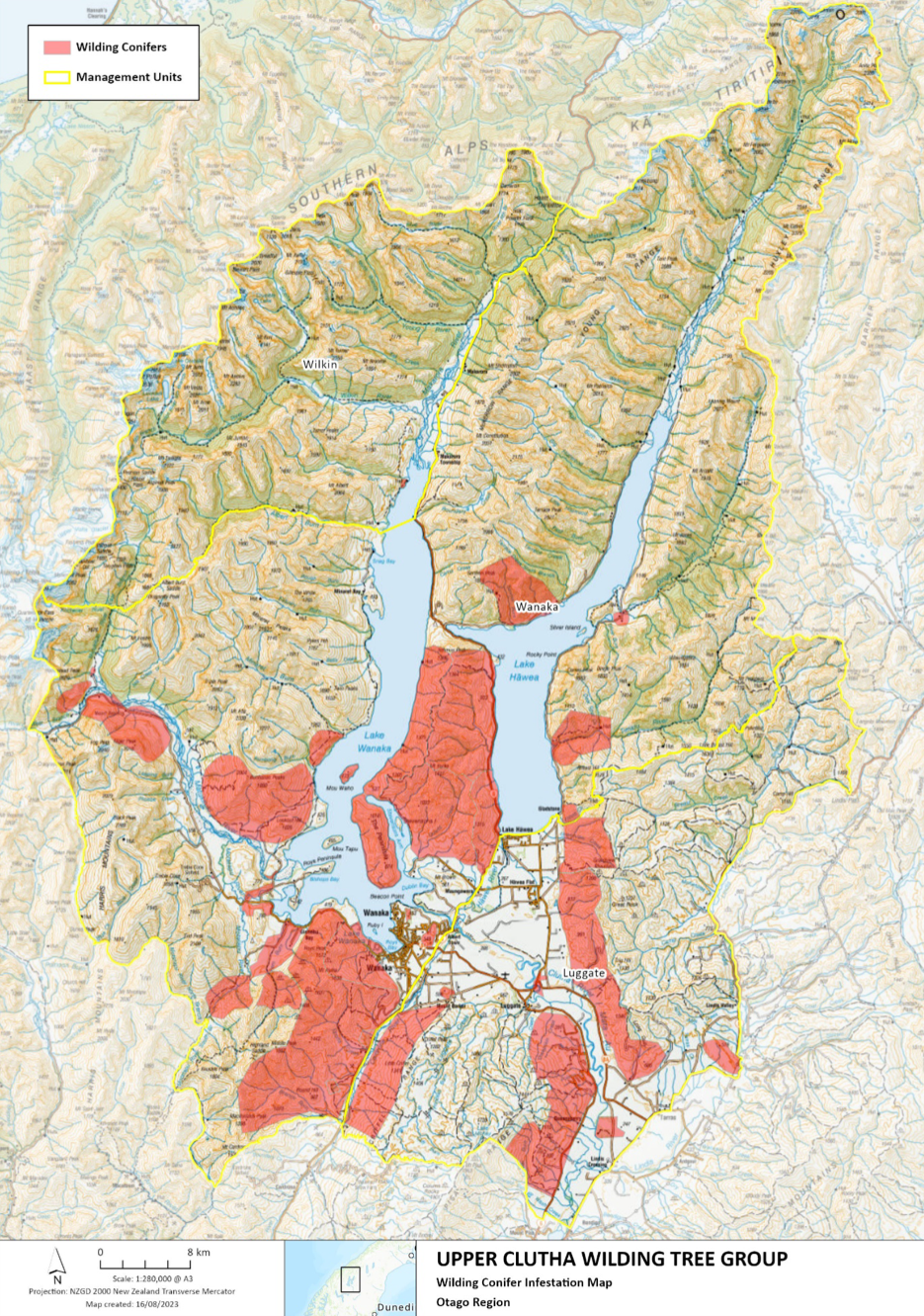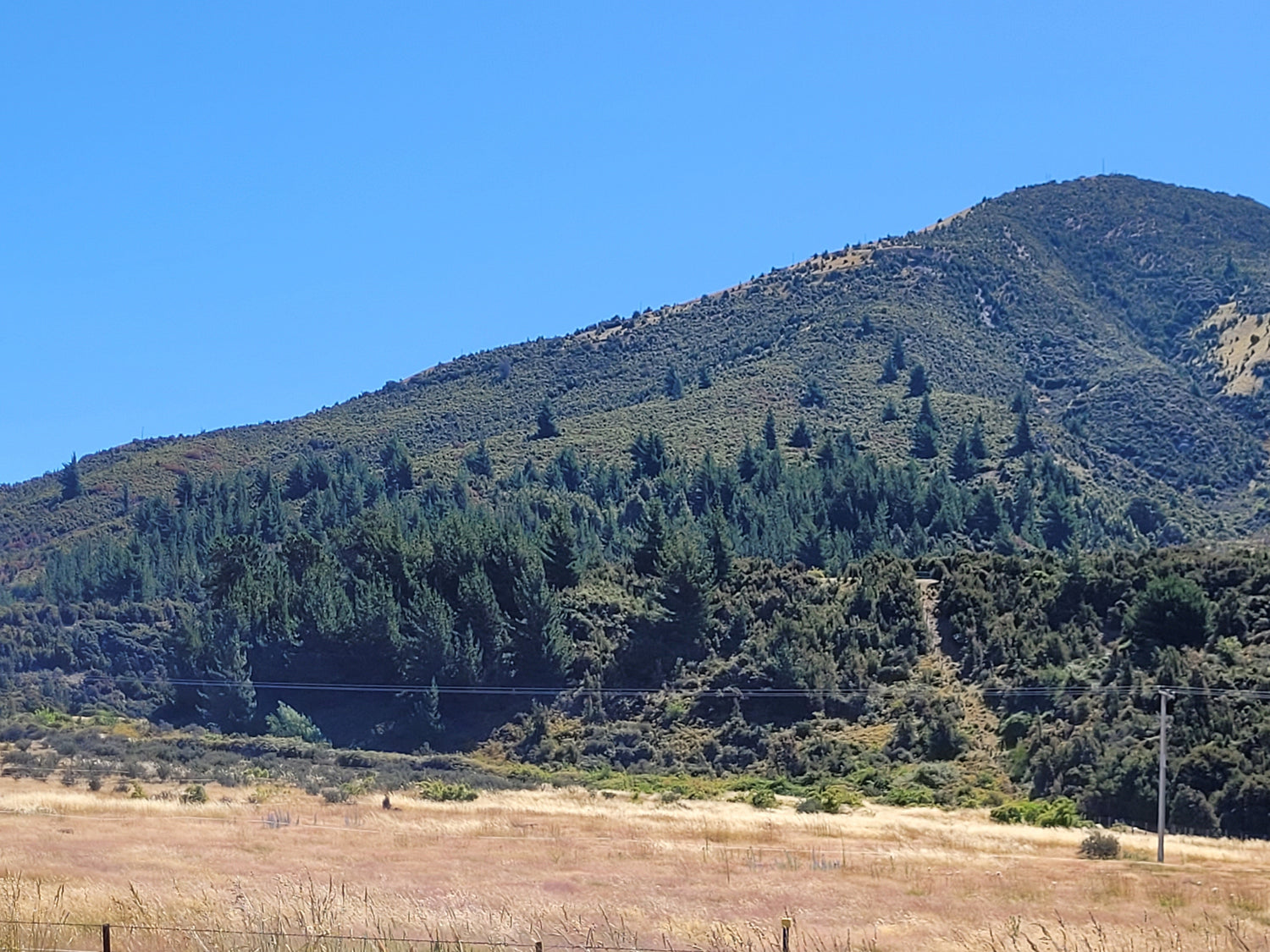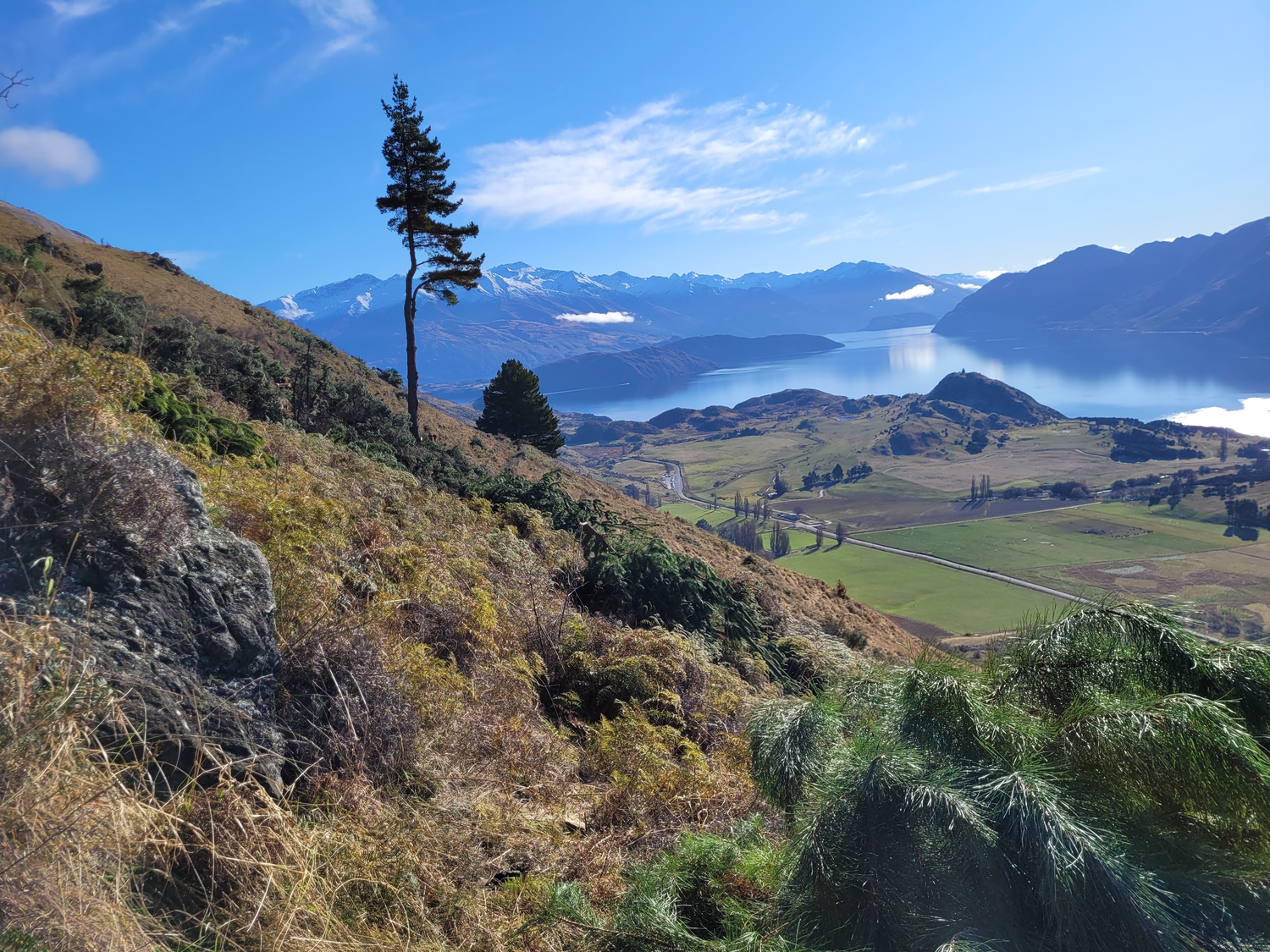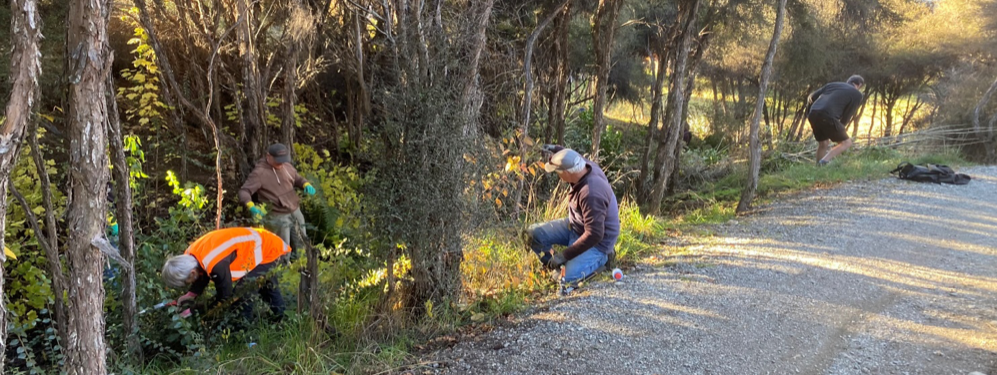Foreward
The Upper Clutha holds an iconic space within both the Otago region and New Zealand. Its awe-inspiring landscape is cherished by locals and admired by visitors alike. From vast tussock grasslands to alpine terrain and beech forests, its biodiversity is rich and diverse.
Unlike neighbouring areas in Otago and the Mackenzie, the Upper Clutha has been spared from significant wilding tree infestations thus far. However, we stand at a critical juncture as these trees are in their early stages of spreading. Now is the time for action and investment to prevent this issue from escalating to where they become a serious threat to our biodiversity and tussock grasslands and where the cost of control escalates to the high levels seen elsewhere.
The potential benefits of control measures are well known and detailed in reports funded by MPI and ORC. This strategy provides a framework for how the Upper Clutha Wilding Tree Group plans to deal with wilding trees.
Rob Phillips
Chairperson UCWTG
Our Strategy
This strategy focusses on the necessary foundations so that effective wilding tree control work can continue and expand, and ensuring there is adequate resourcing, greater participation and greater urgency. As a non-statutory document, this plan acts as:
- A primary reference for decision making.
- Guidance for developing annual operational plans.
- Communication to funders, stakeholders, partners and landowners.
- Education for all relevant parties.
- Assurance that funds provided are being used to best effect.
Our Approach
Under this strategy, our approach to the control and prevention of wildings is:
- To survey and prioritise wilding infestations to inform the allocation of funding and effort.
- To seek funding support locally, regionally, and nationally to control key wilding species.
- To inform, empower, activate and sustain community interest and support for wilding control.
- To build and maintain “social licence” to control wildings, especially in areas of high visibility.
Upper Clutha Wilding Tree Group (UCWTG)
Our Group
The UCWTG is a community-led, non-profit organisation created in 2022 in response to the ever-increasing threat and impact posed by exotic wilding trees spreading in the Wānaka and Hāwea areas.
The group is made up of members of the community with a wide range of knowledge and experience who are dedicated to the long-term goal of seeing the area’s natural landscapes and indigenous biodiversity protected against the invasion of exotic wilding trees.
Our Purpose
- To control, prevent and promote the control and prevention of key wilding tree species.
- To plan, manage and co-ordinate the use of resources to control key wilding tree species.
- To promote public awareness and knowledge of the key wilding tree species and their effects.
- To source funding for wilding tree control and prevention.
Our Vision
- To protect our outstanding natural landscapes and indigenous biodiversity from the threat of key wilding tree species in the Upper Clutha region.
Our Mission
- In 5 years – working collaboratively to ensure wilding infestations are under control in strategic priority locations.
- In 10 years – wilding infestations are under control (not eradicated) in all locations.
Situation
The wide-ranging negative impacts of wilding tree infestations have been amply demonstrated and acknowledged at all levels in many parts of New Zealand, nowhere more so than in the Otago region.
Left unchecked, wilding trees will permanently change our iconic environment, overwhelming our native forests and tussock lands, and endangering our natural ecosystems which attract so many to live in and visit this special place.
The adverse effects resulting from infestations of these key wilding tree species include:
- Reduced water yield, particularly in low rainfall catchments.
- Out-competing and subsequently replacing native vegetation.
- Increased risk of wildfire.
- Reduced economic productivity of land.
- Impacting on social and cultural values, e.g. landscape, recreational.
In the Wānaka – Hāwea area, wilding pines (also known as wilding conifers) are one of the main threats, with seeds spreading into farmland, our high country and public conservation land from inappropriately located plantings or from existing wildings. Urban amenity plantings are also giving rise to several other unwanted wilding species in the area.

Upper Clutha Wilding Pine Infestation Map
Shows areas where there is wilding conifer infestation – with densities of infestation varying from young, scattered trees to areas of dense infestation.
Wilding Pine Control
Our plan is to build on past wilding pine control work carried out by DOC, landowners, and other parties so that this work is not wasted. Wilding pine control is a problem that has an end point, and which can be sustained e.g. drier environment, large % of area farmed, prevailing winds, manageable areas of wildings, experience and confidence gained from work done to date.
Control efforts to date have been very successful but will require an ongoing effort for many years in follow-up work, and in areas where control is yet to be undertaken.
The UCWTG will establish and sustain a collaborative partnership with the Upper Clutha community to both support removal and prevent wilding pines from re-establishing.
Through advocacy and knowledge-building e.g. education, open and volunteer days, liaison and partnerships with landowners and land managers, our group aims to generate the confidence so that, by working together, our goal is achievable.
Mt Iron will serve as our main educational focus as it is highly visible from Wanaka, a popular recreational spot, has a good access track running through a large part of it and is visible from backyards. It will be easy for people to see progress, attend volunteer days, learn about wildings and ultimately, hopefully, help plant a future native forest.
The UCWTG is also concerned about non coniferous exotic “garden escapes” that are spreading into many public areas and has monthly volunteer working bees where the focus is on controlling these plants.
Operational Plans
Each year an Operational Plan is developed by the UCWTG supported by funding sources (ORC, QLDC, Community) and participating landowners. Wilding control methods will vary according to the species and their age, location and density. Methods range from hand-pulling, cutting and pasting, drilling and filling, ground-based felling and aerial application of herbicide.
All work follows the “Wilding Pine Control Guidelines: A guide to choosing the right control method” and best practice for these methods.
Strategic Alignment
Under the Otago Regional Pest Management Plan 2019-2029 (ORPMP) wilding conifers are identified as a Progressive Containment Programme, with an objective to “progressively contain and reduce the geographic extent of wilding conifers within the Otago Region to minimise adverse effects on economic well-being and the environment.”
The work being undertaken by the group strongly aligns with the Otago Regional Wilding Conifer Strategy 2023 – 2029 and supports the outcomes sought, specifically:
Improving Understanding and Prioritising Work
- There is an increase in the amount of work being undertaken to control the spread of conifers at an early stage (pre-coning).
- Reliable monitoring data is used to prioritise control work, report on the impact of control work undertaken and provide a better understanding of subregional nuances.
Awareness and Education
- Communities across Otago are well-informed and aware of the risk of wilding conifer spread, the urgency of the issue in their area and the benefits of early intervention.
- Landowners are aware of their responsibilities regarding wilding conifer control, the need to keep areas clear and manage their land accordingly.
- Individuals and communities are undertaking a greater amount of wilding control, motivated in part by successes reported elsewhere.
Funding
- Community-led wilding conifer control groups are operating across the region. The Wanaka Management Unit (MU) is currently not included in the MPI national wilding pine funding and the Luggate MU has no more funding. These management units are recognised as being of high importance to the National Programme. The UCWTG is encouraging the ORC and QLDC to include it in their respective Long Term Plan funding programmes, as they do with the Whakatipu and Central Otago wilding conifer groups. This is vital for the UCWTG’s long-term strategy for the Upper Clutha basin.
- Landowners are key to the success of the control and are asked for 20% of operational costs as their contribution. This is as per the National MPI Programme.
- Being a community-led organisation, we are encouraging funding support from the local community to aid our forward planning.
Community members removing weed species near the Albert Town Lagoon at a monthly working bee for Upper Clutha Wilding Tree Group volunteers





